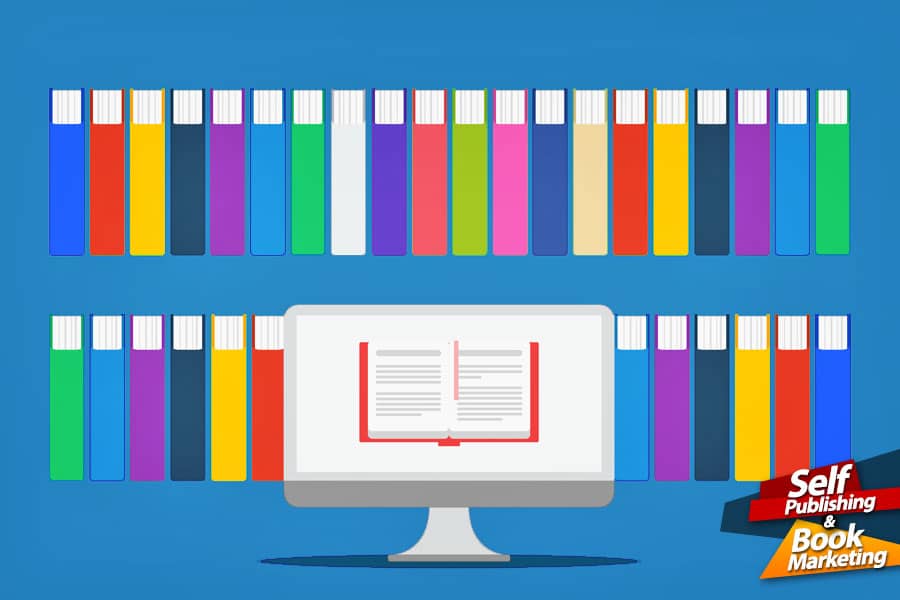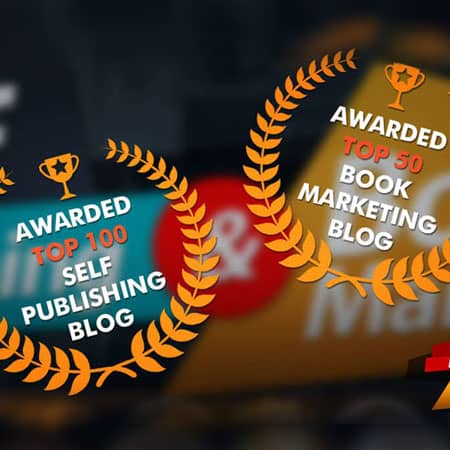
Simon K Williams - May 13, 2021 - 
An Online Course – How To Successfully Turn a Book Into It?
If you could wave a magic wand and instantly turn your book into an online course, would you? Okay, okay, that’s a rhetorical question––of course you would! But like most of us, you’ve run short on magical wands these days. Many entrepreneurial authors create compelling and successful online courses from their book content, but have you ever wondered why?
An online course makes your content accessible to far more people than a book alone. That means you’re serving your customers while also raking in revenue.
Well, first of all, the alchemy of the digital age is all about repurposing content. One blog post, white paper, or e-book does not reach its true destiny until it has been revamped into several different formats. But philosophical aims of digital content aside, there is big money in online courses, we’ll get into just how big later on.
When you can make that happen, everyone wins.
Creating An Online Course Is Easier Than You Think!
Until recently, only big global businesses used digital training, primarily to reduce staff training costs. For the most part, they were poorly created and delivered. As you’ve probably noticed, they still are.
Why, with all the technology and knowledge we have now, should we be producing such B-movie online courses?
Is it expensive? Nope. Is it time-consuming? A bit. Is it a pain in the butt? Not if want to expand your reach, your influence and want to grow your business.
Dramatic technological improvements and a rapid increase in internet speeds and stability have contributed to major transformations in our ability to create, produce, and deliver online courses.
These days, there’s no excuse not to offer a massive range of powerful and engaging content that educates, inspires, and transforms people.
If you’ve written a book, you already have 75% of what you need to create a best-selling digital course that can sell at 30x the book cover price. And you don’t have to include additional content.
What The Numbers Say
There are few guarantees in life, other than this one: it will surprise you ad infinitum.
The following numbers may surprise you too, and they provide further evidence (along with impetus and motivation to create them) that online courses are one of the future’s most promising, effective, and profitable learning methods.
Online training courses are exactly the place to focus your attention right now and here are 4 reasons why:
#1 Growing at a staggering rate of 70% year-on-year
#2 Forecasted to be a 375 billion dollar industry by 2026 (Source)
#3 Covid-proof (without requiring a vaccine)
#4 Easy to sell and deliver internationally
Boost Passive Income By 88%?!
That’s not a typo. It’s possible. I’ve done it, and I’m going to show you how.
To start, let’s hit on that book you created for a moment. Did it squeeze all the blood, sweat, and tears from your weary body? If so, was it worth it? (You decide what makes it worth it).
Putting momentous personal achievements aside for a moment, books are highly effective PR products. They elevate our industry standing, demonstrate our skills, expand opportunities for both author and readers, and increase the value of our service.
So maybe it’s time to write another book? If the juice is worth the squeeze for you, go for it.
But an online course achieves all the same goals––tenfold. It makes far more business (and common) sense to focus your efforts on repurposing your book content for an online course. Why?
Your book is an asset but unless a high-profile publisher picks it up, it likely won’t reach phenomenal sales. Most business books sell for under $30, meaning you have to sell a TON of books to achieve a significant income stream. And that’s without factoring in the resources required to produce, edit, print, and deliver it.
On the other hand, online training courses typically sell for 10 to 30 times the book price for essentially the same information. For example, I started an app development business producing mobile apps for consultants, coaches, and small business owners.
My book “Rich App Poor App” sells for $17.
My course with identical insights sells for $1497.
That’s 88x my book’s sales price! (Do I need to point out which one put more cash in the bank?!). The biggest difference between a book and a course is that course content is structured for easier consumption and integration.
Online training has a variety of names: CBT (Computer Based Training), eTech (Education Technology), eLearning (Electronic Learning), Instructional Design, and many others. As you can imagine, the terminology creates a lot of unnecessary confusion.
Let’s make it clear and simple, and focus on the goal: to teach and train.
With expert guidance, thoughtful intentions, and effective planning, you’ll have your own training course online by the end of the week (that holds true even if you’re reading this on a Friday!). And it won’t break the bank either, but we’ll get to that later.
Show Me The Money!
The eLearning industry is approaching a net worth of $400 billion. For reference, the sports industry is worth $500 billion. Hot damn! As you might expect, there are many different levels, products, technologies, and services to choose from.
The 4 most common digital training segments are:
- Global staff training
- Academic study (universities and schools)
- Commercial educational products
- Marketing educational products
Each type uses an LMS, or Learning Management System, to deliver the content. An LMS is essentially a website platform.
Much like you choose a hosting provider, you need to select an LMS partner to deliver your material to users. The cost ranges from hundreds of thousands of dollars (even more if you build your own), to free, with a lot in-between.
As we move down the list, the price lowers with global staff training as the most sophisticated and expensive solution to marketing educational products as the least expensive or no-cost distribution partners. How do you choose an LMS provider? We’ll get there soon, but first––since we’re talking money––let’s tackle what must be a burning question for you by now:
How Much Can I Sell My Course For?
Think about it this way: there are good drivers and bad drivers and a lot of in-between drivers. The same goes for online courses. Decide right now that your course is going to be amazing, and then make it happen.
To start, you have to consider all the factors that will determine the final price. Can you guess what the primary influence is?
Create A Bang-On User Experience.
Let’s get this critical point out of the way: preaching isn’t teaching. If you can remember this throughout your course creation and delivery, you’ve already overcome one of the biggest hurdles.
Surely you’ve sat through one of those boring lectures where the “teacher” read from the slides. Online training courses pose the same risk. Talking at people via YouTube does little to engage them. Like children, when we’re put in front of a screen it MUST be interesting or we’ll find something that is. You only lose a user once, and then they’re gone forever. No one pays for a boring service.
In contrast, highly-engaging courses with expert content will sell for thousands of dollars. So, avoid making users feel like you’re reading them a See Spot Run book. Focus on making your course interesting, engaging, and diverse. Use a variety of activities, games, exercises, and questions.
Make A Solid Investment. Not surprisingly, highly-engaging content takes more time, effort, and skill to create. But it’s far more valuable to users, and they will be willing to pay more as a result. Remember––if you’re not making a solid investment in your course, no one else will either. Keep this in mind when you’re selecting a training platform.
Drive Home The Benefits. Your course isn’t about you or what you’re offering. It’s about how much it’s going to improve someone’s life. Contrary to common assumption, benefits-driven marketing happens before you create the course, not after. It’s a mindset first; then it’s a strategy.
When it’s time to sell your course: Focus on and highlight the positive outcomes of taking your course, specifically, what problem is your course going to solve and how will it solve it? Features are important, but the benefits are everything. As the saying goes, the builder doesn’t want a drill, he wants a hole in the wall. Sell the hole, not the drill.
How To Choose A Platform
Let’s return to the four most common digital training segments, #3 on the list: commercial educational products. The good news is that there are various platforms to choose from, each offering a solution and a service at a reasonable price. The bad news is that there are an intimidating number of options for the rookie to navigate. This issue demands its own article, but for now we’ll keep it simple.
What’s Your Business Model?
Under the umbrella of Commercial Products there are three options that pertain to your business proposition:
GIFTS – Gifts build an audience for marketing purposes.
Goal: Build your audience/influence
Consider: YouTube, Facebook groups, Linkedin groups, Udemy, WordPress plugins etc.
Engagement: Low
Typical Selling Price: Free
P4P (Products for Prospects) – P4Ps deliver insights and value at an affordable cost, qualifying the audience and directing them to higher-level services.
Goal: Get users into your ecosystem
Consider: Udemy, Thinkific, Teachable, Podia etc.
Engagement: Medium (includes some Q&A’s throughout the course)
Typical Selling Price: $100 – $1000
Core Products – Core Products provide significant results in their own right, which may or may not lead to other services.
Goal: Deliver a great product/service that creates results (not just learning)
Consider: Moodle, Expert-Velocity (a variation of Moodle created for Authors), full LMS solutions, and custom solutions
Engagement: High (includes drag & drop questions, user-directed learning, report submission, and live sessions)
Typical Selling Price: $1000-5000
Choosing the right platform starts with having a clear business model and objective. If you’re converting your book to a course, you will create a P4P or Core Product, so select the platform accordingly.
For more tips on selecting your platform, check out this resource: How do you select the right digital training platform.
Creating Killer Course Content
It’s easier to attract, engage, and sustain the attention of your audience when you deliver content live. You get feedback instantly, and as you become more skilled, you can adjust your delivery to continue meeting your students’ needs. You don’t have this luxury when you’re delivering pre-recorded digital content, so more effort is required to engage your audience’s attention.
Use Multimedia
In any learning context, a good teacher has a massive toolkit of materials, games, and techniques. An online training course is most effective when it includes a range of diverse media. It helps to think of your course as a multi-media event.
Use methods that elicit their interaction. Exercises like drag the answers into the correct spot, multiple-choice questions, single choice questions, select what to watch next, identify the odd one out, and other user-directed learning tools allow students to interact and engage with content in fun and meaningful ways.
Report On Progress
It’s not enough to provide great learning content and leave students to evaluate their own progress. Your course should display their progress, and thus help motivate them to continue all the way through until completion.
Gamify It
Gamification applies game-design elements and principles to online course content. It’s like a set of activities and processes for solving problems by applying game element characteristics. For example, progress bars, course badges, leaderboards and more, keep students interacting with course material and prolong their engagement.
Create Blended Learning
The Holy Grail of successful online training combines a highly-engaging course with live events to create a ‘blended learning’ solution. Options include webinars or other live virtual events as part of the overall learning solution.
Course Creation Formula
Every creative solution has an effective formula behind it, and course creation is no different. With your book in hand, let’s step through this easy, expert process for turning your book into a best-selling course.
The Author Advantage
As a book author, you have a massive advantage. The hard work is done, which means your course is 75% done too.
How Much Is Enough?
You don’t have to include the book’s entire content in the course. Indeed, it makes more sense to extract the most critical ideas to form the heart of your course. Aim for about 20K-30K words of rich, comprehensive content to create a significant P$P, or Core course. Content that exceeds the suggested word count will deliver more effectively in multiple, successive courses.
G-R-O-W
The G-R-O-W formula is a tried and tested structure for converting books into an effective and engaging digital training course. This simple and effective process starts with the end goal and follows a process of reverse engineering (in instructional design, we call this Backwards Design).
G: Goal – Determine student learning objectives.
R: Review – Review the training content you have (including your book content and any other useful elements).
O: Objects – Determine the interactions required to achieve the desired Goal. What actions will students need to take to meet the learning objectives?
W: Work – The thought work is done. Now you can create or compile all the necessary materials, including video content, downloadable PDFs, questions, and the various interactions you want to include.
As the co-founder of Expert-Velocity I help business owners convert their books into digital courses using the formula outlined above.
Becoming a book author is a huge achievement. As you’ve experienced, writing a book is no small task, so using that thick, rich content borne of your blood, sweat, and tears to your advantage is a logical next step.
An online course is not only one of the most financially sound methods for achieving this, it’s also a practical approach to making your content more accessible to a wider audience.
If you liked this article you might also like:
• The Book Marketplace Has Changed. Make Your Book Available From All the Online Retailers!
• Amazon Author Central – How to Setup Your Author Page on Amazon!
• Never Judge a Book By Its Cover! – Are You Really Sure?
• How to Increase Book Sales? – 9 Creative Strategies to Do It!
• How to Sell Books – Find New Ways to Differentiate Your Content!


